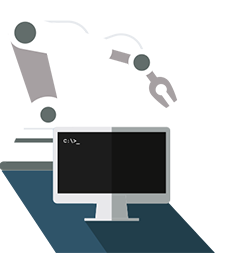New publication on Maintenance via remote access – IT-security aspects
Read more: https://www.safe-machines-at-work.org/control-devices
Read moreDigital Manufacturing

The Project Group “Digital Manufacturing” is excited to announce a new international webinar series “From Lab to Line: Practical OSH Strategies for Digital Manufacturing”
focusing on the intersections of Occupational Safety and Health, Wellbeing, AI, Digitalization, and Industrial Security. Experts from around the world will share insights, strategies, and innovations shaping the future of safe and sustainable workplaces. This series will highlight cutting-edge technologies, policy developments, and best practices across industries. Whether you're a researcher, policymaker, or practitioner, this is your opportunity to connect and collaborate globally. Stay tuned for further dates and register for each event!
Always with the focus on how safety and health at work is connected to industrial security we plan to discuss relevant issues and give practical examples and advice on the following topics:
Digital manufacturing is the application of digital technologies to manufacturing, having the right information, at the right place, at the right time.
The goal is to link disparate systems and span processes across all departments and functions within the value chain. By doing so, each stakeholder gains quicker access to more accurate data, allows higher customization of product, producing smaller batch, generate cost savings, workplaces are becoming more ergonomic and health is being promoted. It is not always about product but also services.
Nevertheless, convergence of the information technology (IT) and operational technology (OT) is potential increasing the cyber risk, connecting historically isolated production systems with enterprise IT infrastructure. This shift often opens potential vulnerabilities, creating conduits for malware to enter the organization through end user workplace devices e.g. spear-phishing. One of the biggest risks facing manufacturers today is the potential disruption of production services as a result of a cyber-attack.
This bring new opportunities and challenges for safety and health at work in the world of work, in production and application. Safety in the broadest sense refers to both physical security (safety) and IT or cyber security (security).
The approach of the Section Machine and System Safety is to make available documents with simple solutions and examples to reduce those risks.
Each individual element of the system Human - Machine - Environment may be the cause of system failure and thus lead to risks. In Cyber Physical Systems additional risks from digitization must be analysed and assessed.
The digital transformation is about rethinking processes and activities in a digital way. It offers opportunities for occupational safety and health to make workplaces even safer but causes also risks. By networking a large number of safety devices, for example, areas can be better monitored and safeguarded. The safe remote control of machines is another example and can also lead to dangerous work processes being carried out safely without causing hazards for people. It is therefore important that occupational safety and health guides digital manufacturing from the very beginning.
In all these considerations, industrial security must be an essential element. Processes that can be changed by unauthorized access would have a negative impact on occupational safety.